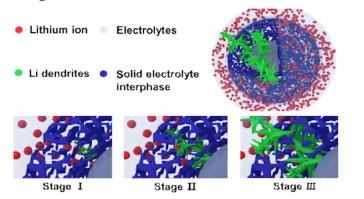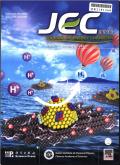Enabling dendrite-free charging for lithium batteries based on transport-reaction competition mechanism in CHAIN framework
Abstract
Worldwide trends in mobile electrification will skyrocket demands for lithium-based battery production, driven by the popularity of electric vehicles. However, both lithium metal batteries and lithium ion batteries face severe safety issues due to dendrite nucleation and growth process. Li deposition is significantly influenced by interfacial factors and charging conditions. In this paper, an electrochemical model considering the internal and external factors is proposed based on Monte Carlo method. The influence of internal solid electrolyte interphase (SEI) porosity, thickness and the external conditions on dendrite growth process is systematically described. The simulation results support that the three factors investigated in this model could synergistically regulate the dendrite growth process. Three competition mechanisms are proposed to tailor lithium deposition for Li-based batteries and numerical solutions for variation pattern of dendrite growth with time are fitted. A three-step process describing kinetic process of lithium deposition is proposed. To achieve dendrite-free charging process, charging strategies and emerging materials design should be considered, including physicochemical materials engineering, artificial SEI, and design for dynamic safety boundary. This work could contribute to the foundation for insights of Li deposition mechanism, which is promising to provide guidelines for next-generation high-energy-density and safe batteries in CHAIN framework.


 求助内容:
求助内容: 应助结果提醒方式:
应助结果提醒方式:


